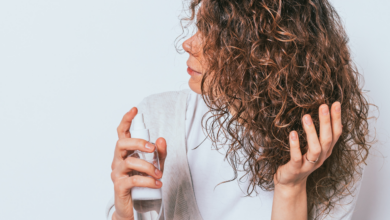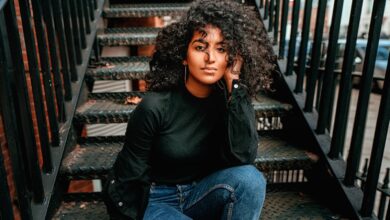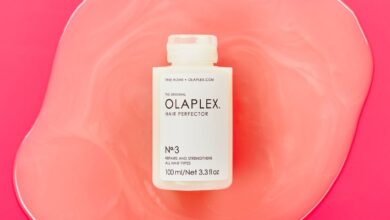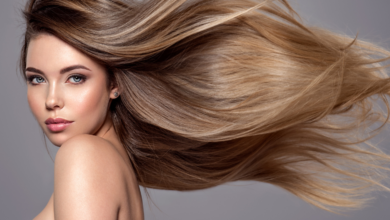
As you sit in the salon chair, eagerly awaiting your new hairstyle, you may have heard terms like Ombre, Sombre, and Dip-Dye being thrown around. But what do they actually mean? This article aims to decode these popular gradient hair coloring techniques, giving you a clearer understanding of what each one entails. Whether you’re looking for a subtle transition from dark to light or a bold burst of color, this guide will help you navigate through the world of gradient hair coloring techniques with confidence.
Ombre
What is Ombre Hair?
Ombre hair refers to a gradient hair coloring technique where the color transitions from dark to light, creating a beautiful and dimensional effect. The word “ombre” translates to “shadow” in French, which perfectly captures the essence of this hair trend. Ombre hair is typically achieved by lightening the lower half of the hair, resulting in a seamless blend from root to tip.
How is Ombre Hair Created?
To create ombre hair, a hairstylist will carefully bleach or lighten the ends of your hair while keeping the roots darker. The lightened portion of the hair will gradually become lighter, creating a natural, sun-kissed look. The transition between the darker and lighter shades should be gradual and blended, giving the hair a soft and effortless appearance.
Popular Ombre Hair Color Combinations
There are numerous ombre hair color combinations to choose from, depending on your personal preferences and skin tone. Some popular choices include:
- Brown to Blonde: This classic ombre combination features a transition from dark brown at the roots to light blonde at the ends. It’s a versatile and universally flattering choice that adds depth and dimension to your hair.
- Black to Silver: For those who dare to go bold, the black to silver ombre offers a striking contrast. The dark roots gradually fade into a stunning silver shade, creating a chic and edgy look.
- Auburn to Copper: This warm and fiery combination is perfect for those with red undertones in their hair. The auburn roots blend into a vibrant copper shade, adding a touch of warmth and richness to your hair.
Maintenance and Upkeep for Ombre Hair
Maintaining ombre hair requires some effort to ensure your color remains vibrant and your hair stays healthy. Here are some tips for proper maintenance:
- Use Color-Safe Hair Products: Invest in shampoos, conditioners, and hair masks specifically designed for color-treated hair. These products will help preserve your ombre color and keep it looking fresh.
- Protect Against UV Damage: Prolonged exposure to the sun can fade your ombre hair color. To prevent this, use hair products with UV protection or wear a hat when spending time outdoors.
- Regular Touch-ups and Root Maintenance: Ombre hair typically requires touch-ups every 8 to 12 weeks, depending on how fast your hair grows. This helps maintain the gradient effect and prevents a harsh line between the two colors. Additionally, apply root touch-up products to keep your dark roots looking seamless.
- Avoid Heat Styling Damage: Excessive heat styling can cause damage to your hair, making it more prone to breakage and dullness. Minimize the use of heat tools and always use a heat protectant spray before styling.
- Color Refreshing Techniques: Over time, your ombre hair color may fade or become brassy. To refresh the color, consider using color-depositing shampoos or toners to revive the vibrancy of your ombre.
Sombre
What is Sombre Hair?
Sombre hair, short for “subtle ombre,” is a variation of the ombre hair technique that offers a softer and more natural-looking gradient. Sombre hair aims to achieve a seamless blend between the darker roots and the lighter ends, while still maintaining a soft and subtle contrast.
How is Sombre Hair Created?
Creating sombre hair involves a similar technique to ombre hair, but with a more delicate touch. The hairstylist will strategically hand-paint highlights and lowlights throughout the hair, focusing on creating a soft transition between the colors. The result is a more understated and natural-looking gradient effect.
Popular Sombre Hair Color Combinations
Sombre hair offers a wide range of color options to suit different preferences and skin tones. Here are a few popular sombre hair color combinations:
- Dark Brown to Caramel: This warm and earthy combination is perfect for brunettes looking to add dimension to their hair. The dark brown roots blend into caramel-toned ends, creating a natural and sun-kissed effect.
- Ash Blonde to Platinum Blonde: For those looking for a cool and icy look, the transition from ash blonde roots to platinum blonde ends is a stunning choice. This color combination adds a modern and edgy touch to your hair.
- Chocolate Brown to Honey Blonde: This combination is ideal for those who want a subtle and natural-looking sombre. The chocolate brown roots gently fade into honey blonde ends, giving the hair a soft and effortless appearance.
Maintenance and Upkeep for Sombre Hair
Proper maintenance is essential to keep your sombre hair looking fresh and vibrant. Here are some tips to help you maintain your sombre hair color:
- Follow a Hair Care Routine: Use shampoo and conditioner specifically formulated for color-treated hair. These products help keep the color intact and prevent it from fading.
- Minimize Washings: Washing your hair too frequently can strip away the color. Try to wash your hair every other day or use dry shampoo to extend the time between washes.
- Deep Conditioning Treatments: Pamper your hair with regular deep conditioning treatments to keep it hydrated and nourished. This helps prevent dryness and breakage, especially in the lightened ends of your hair.
- Protect from Heat and UV Damage: Apply a heat protectant spray before using any heat styling tools to avoid damage. Additionally, wear a hat or use hair products with UV protection when spending time in the sun.
- Regular Trims: Trim your hair every 6-8 weeks to get rid of split ends and maintain its overall health. This prevents breakage and helps your sombre hair look fresh and polished.
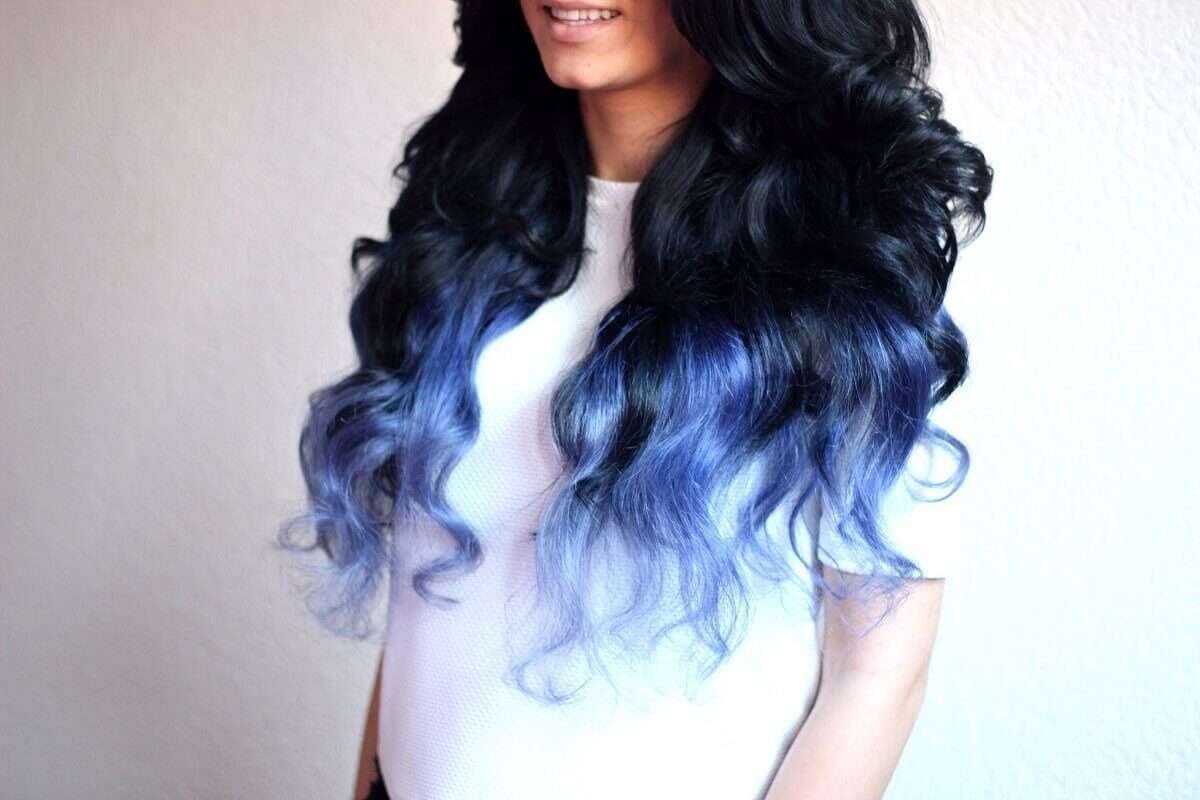
Dip-Dye
What is Dip-Dye Hair?
Dip-dye hair is a fun and bold hair coloring technique where the ends of the hair are dipped into a different color, creating a striking contrast between the shades. This technique is known for its vibrant and eye-catching results, making it a popular choice for those who want to make a statement with their hair.
How is Dip-Dye Hair Created?
Creating dip-dye hair involves applying a different color or colors to the ends of the hair, while keeping the roots their natural color. The hairstylist may use a brush or even hand-paint the color onto the ends, resulting in a clear and defined line between the two shades.
Popular Dip-Dye Hair Color Combinations
Dip-dye hair is all about embracing creativity and experimenting with different colors. Here are some popular dip-dye hair color combinations:
- Blonde Tips: This classic dip-dye combination involves lightening the ends of the hair to achieve a blonde hue. It’s a versatile option that works well with various hair colors and gives a subtle pop to your hairstyle.
- Pink Ombre: For those who love a bold and playful look, a pink dip-dye can be a fashionable choice. The ends of the hair are colored in vibrant shades of pink, creating a striking contrast with the natural hair color.
- Blue and Purple Mix: Mixing shades of blue and purple adds a cool and edgy touch to your dip-dye hairstyle. This combination allows you to experiment with different tones and create a unique and personalized look.
Maintenance and Upkeep for Dip-Dye Hair
Dip-dye hair requires regular maintenance to keep the color vibrant and prevent any unwanted fading. Here are some tips to help you maintain your dip-dye hair:
- Use Color-Safe Hair Products: Use shampoos and conditioners specifically designed for colored hair. These products are formulated to be gentle on the hair and help retain the vibrancy of your dip-dye color.
- Avoid Frequent Washing: Washing your hair too often can cause the color to fade more rapidly. Try to minimize washing and use dry shampoo in between washes to refresh and absorb excess oil.
- Protect Against Heat and UV Damage: Heat styling tools and prolonged exposure to the sun can lead to color fading. Apply a heat protectant spray before using heat tools and use hair products with UV protection to shield your hair from sun damage.
- Consider Color Refreshing: Over time, the color on the ends of your hair may start to fade. To keep your dip-dye vibrant, consider refreshing the color by applying a semi-permanent dye or toner to the ends.
- Regular Trims: Trim your hair regularly to get rid of split ends and keep your dip-dye looking polished. This also helps prevent breakage, especially in the lightened ends of your hair.
Comparing Ombre, Sombre, and Dip-Dye
Key Differences Between Ombre, Sombre, and Dip-Dye
While ombre, sombre, and dip-dye are all gradient hair coloring techniques, there are key differences that set them apart:
- Ombre: Ombre hair is characterized by a more distinct contrast between the roots and the ends, with a clear transition from dark to light. The color change is usually more dramatic, creating a bolder and more noticeable effect.
- Sombre: Sombre hair, on the other hand, aims for a softer and more subtle gradient. The transition from the roots to the ends is less noticeable, creating a more natural and blended look.
- Dip-Dye: Dip-dye hair is all about creating a clear and defined line between the natural hair color and the colored ends. It involves coloring only the ends, resulting in a high-contrast and striking effect.
Which Technique is Best for Your Hair Type?
Choosing the right technique depends on various factors, including your hair type, personal style, and desired look. Here are some considerations to help you decide:
- Ombre: Ombre hair works well on most hair types and lengths, but it tends to be more noticeable on longer hair. It adds a dramatic and bold touch to your hair and is great for those who want a significant color change.
- Sombre: Sombre hair is ideal for those who prefer a more natural and subtle gradient. It complements various hair types and lengths and is perfect for those who want to enhance their natural hair color.
- Dip-Dye: Dip-dye hair is a fun and adventurous choice, perfect for those who want to make a statement with their hair. It works well on shorter hair lengths and adds a burst of color to any style.
Considering Personal Style and Preference
Your personal style and preference play a significant role in choosing the right hair coloring technique. Consider the following factors to help you make the decision:
- Boldness: If you love bold and eye-catching looks, dip-dye might be the best choice for you. It allows for unlimited color combinations and encourages creativity.
- Naturalness: If you prefer a more natural and understated look, sombre or ombre hair might be the better option. These techniques create a softer and more blended effect, enhancing your natural hair color without drastic changes.
- Versatility: Ombre hair offers a wide range of color combinations, making it a versatile choice. It allows you to experiment with various shades and create a unique look that suits your style.
Professional Salon vs. DIY
While it’s possible to achieve the gradient hair color at home, it is often best to visit a professional hairstylist, especially if you’re trying these techniques for the first time. Here’s why:
- Expertise: Hairstylists are trained professionals who have extensive experience with color techniques. They can provide valuable advice, assess your hair type, and ensure the best possible outcome for your desired look.
- Customization: A hairstylist can assess your hair color and skin tone, helping you choose the most flattering color combinations for your complexion. They can also customize the gradient effect to suit your preferences and ensure a seamless blend.
- Precision: Achieving a seamless gradient effect requires careful attention to detail and precision. Hairstylists have the necessary skills and tools to create a professional-looking result, ensuring that the color transition appears natural and well-executed.
- Quality Products: Professional salons often use high-quality hair products and dyes that are specifically formulated for optimal results. This helps minimize damage and ensure that your color lasts longer.
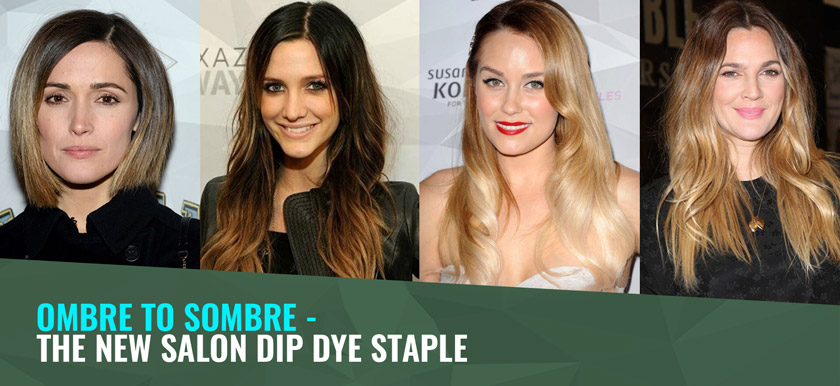
Choosing the Right Hair Color
Understanding Undertones and Skin Tone Matching
When choosing a hair color, it’s important to consider your skin tone and the undertones present. Here’s a quick guide:
- Warm Undertones: If you have warm undertones, such as yellow or golden, hair colors with warm tones, such as honey blonde or caramel, tend to be more flattering.
- Cool Undertones: If you have cool undertones, such as pink or blue, hair colors with cool tones, such as ash blonde or platinum, are generally more suitable.
- Neutral Undertones: If you have neutral undertones, you have the freedom to experiment with both warm and cool hair colors. Consider your personal style and preferences when making your choice.
Blonde vs. Brunette vs. Red Hair
Blonde, brunette, and red hair each offer their distinctive charm, and choosing the right color depends on various factors:
- Blonde Hair: Blonde hair is often associated with a bright and youthful look. It can range from platinum blonde to golden or honey shades. Blonde hair tends to suit individuals with lighter skin tones.
- Brunette Hair: Brunette hair offers a wide range of possibilities, from deep chocolate to warm chestnut shades. It usually complements a variety of skin tones, making it a versatile option.
- Red Hair: Red hair is vibrant and eye-catching, and it comes in various shades, from fiery copper to rich auburn. Red hair can be flattering for individuals with warm undertones and fair to medium skin tones.

Considering Hair Length and Texture
When choosing a gradient hair color, it’s important to consider your hair length and texture as well:
- Hair Length: Ombre, sombre, and dip-dye techniques are suitable for all hair lengths, but the effect may vary. Longer hair tends to showcase the gradient more prominently, while shorter hair can create a more concentrated burst of color.
- Hair Texture: Different hair textures can affect the appearance of the gradient. For example, curly hair might showcase the color in a more voluminous and dynamic way, while straight hair might emphasize the clean lines of the gradient.
Preparing Your Hair for Gradient Coloring
Consulting with a Professional Hairstylist
Before embarking on your gradient hair coloring journey, it’s essential to consult with a professional hairstylist. They can assess the condition and health of your hair, provide recommendations, and help you choose the best technique and color transition for your desired look.
Color Removal or Lightening
If you already have existing color or dye in your hair, it may be necessary to remove or lighten it before achieving the gradient effect. This step ensures that the colors blend seamlessly and create a clean transition.
Preventing Hair Damage
While hair dyeing may cause some damage, there are steps you can take to minimize the impact. Use deep conditioning treatments regularly to keep your hair nourished and hydrated. Additionally, avoid excessive heat styling and use heat protectant sprays to protect your hair from further damage.
Preparing for Multiple Sessions
Creating a gradient effect may require multiple coloring sessions, especially if you’re starting with darker hair. Prepare yourself for multiple salon visits or dedicate ample time if you plan to DIY. It’s essential to follow the recommended timeline between sessions to allow your hair to recover and maintain its health.
Choosing the Right Color Transition
When choosing your color transition, consider the overall look you want to achieve and how the colors will complement your skin tone. It’s essential to select colors that seamlessly blend or create an intentional contrast, depending on your preference.
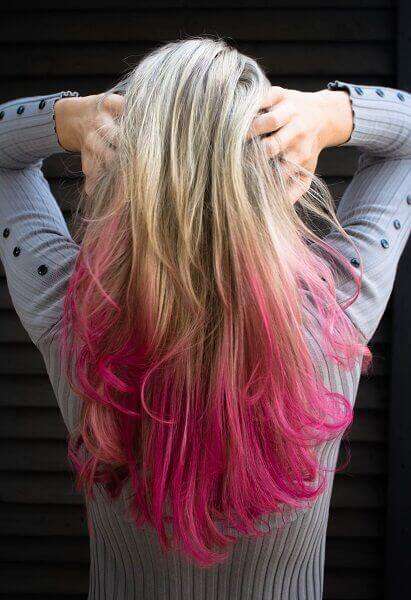
Creating a Natural Gradient Effect
Choosing the Right Placement
The placement of the color is crucial when creating a natural gradient effect. Focus on the mid-lengths and ends of your hair, ensuring that the colors blend softly and naturally into each other. A skilled hairstylist can strategically place the color to achieve the desired effect.
Transition Techniques for a Smooth Blend
To achieve a smooth blend, hairstylists may use various techniques such as balayage, foiling, or hand-painting. These techniques enable them to create a natural and seamless gradient by strategically placing the color throughout the hair.
Working with Multiple Colors
Working with multiple colors can add depth and dimension to your gradient hair. Combining complementary shades or even contrasting colors can create a unique and personalized look. Consult with a hairstylist to determine which color combinations will work best for your hair and desired style.
Color Melt vs. Color Blocking
Two popular techniques for achieving a gradient effect are color melt and color blocking:
- Color Melt: A color melt involves seamlessly blending multiple colors together to create a smooth transition. This technique creates a soft and natural-looking gradient, making it a great choice for those who prefer a more subtle effect.
- Color Blocking: Color blocking creates a more striking and noticeable contrast by showcasing distinct sections of different colors. This technique allows for more creativity and experimentation, making it perfect for those who want to make a bold statement.
Popular Gradient Hair Color Ideas
Classic Ombre with Dark Roots
The classic ombre with dark roots is a timeless and popular choice. Dark roots gradually transition into lighter ends, creating a stunning and effortless gradient. This color combination works well with various base colors, such as brown, black, or even red.

Sombre with Balayage Highlights
Combining sombre with balayage highlights offers a subtle and natural-looking gradient effect. The balayage highlights add dimension and depth to the sombre hair, creating a soft and blended transition. This combination is versatile and suits individuals with different hair types and skin tones.
Dip-Dye with Vivid Fashion Colors
For those who love to stand out, dip-dye with vibrant fashion colors is an excellent option. Think bold pinks, purples, blues, or even neon shades. The dip-dye technique allows you to experiment with various colors and create a playful and eye-catching look.
Pastel Gradient Hair for a Soft Look
For a soft and ethereal appearance, consider a pastel gradient hair color. Opt for soft pinks, lilacs, or blues, gradually transitioning from a darker root shade to lighter pastel ends. This color combination adds a touch of whimsy and femininity to your hairstyle.

Rainbow Gradient for a Bold Statement
If you’re feeling adventurous, a rainbow gradient is a bold and vibrant choice. This involves transitioning through all the colors of the rainbow, creating a stunning and eye-catching effect. The rainbow gradient is a favorite among those who love to make a statement with their hair.
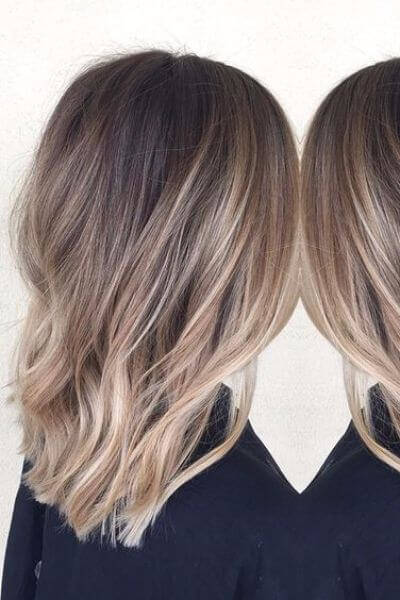
Maintaining Gradient Hair Color
Using Color-Safe Hair Products
To maintain the vibrancy of your gradient hair color, it’s crucial to use color-safe hair products. Look for shampoos, conditioners, and hair masks specifically formulated for colored hair. These products help preserve the color and prevent it from fading prematurely.
Protecting Against UV Damage
UV rays from the sun can cause hair color to fade and become dull. To protect your gradient hair, use hair products with UV protection or wear a hat when spending extended periods outdoors. This helps shield your hair from harmful UV damage and keeps the color intact.
Regular Touch-ups and Root Maintenance
Maintaining a gradient hair color often requires regular touch-ups and root maintenance. The frequency of touch-ups depends on how fast your hair grows and how visible the roots become. Schedule regular appointments with your hairstylist to keep your gradient looking fresh and polished.
Avoiding Heat Styling Damage
Excessive heat styling can damage your hair and cause the color to fade more quickly. Try to minimize the use of heat tools and, when necessary, always use a heat protectant spray before styling. Air-drying your hair is an excellent alternative to heat styling, allowing your hair to recover and stay healthier for longer.

Color Refreshing Techniques
Over time, your gradient hair color may start to fade or lose its vibrancy. To refresh the color, consider using color-depositing shampoos, conditioners, or hair masks. These products can help revive and intensify the color, keeping your gradient looking fresh and vibrant between salon visits.
Removing or Transitioning from Gradient Hair
Color Removal Methods
If you want to remove or transition from your gradient hair color, several methods can help:
- Color Remover: A color remover can help strip the color from your hair, allowing you to start with a clean canvas. However, it’s essential to follow the instructions carefully and consult with a professional hairstylist for best results.
- Color-Fading Techniques: Gradually fading the color through clarifying shampoos, vitamin C rinses, or color-adjusting products can help remove the gradient effect and transition to a different hair color.
Transitioning to a Different Hair Color
If you want to transition to a different hair color, working with a professional hairstylist is recommended. They can offer guidance and expertise in choosing the right transition color that will suit your hair type, skin tone, and desired look. They can also provide the necessary treatments to achieve the desired result safely.
Reversing the Gradient Effect
To reverse the gradient effect and return to a single, solid color, a hairstylist may use techniques such as steaming, lightening, or toning. This helps remove the contrast between the colors and creates a more uniform look. Discuss your desired outcome with a hairstylist to determine the best approach for reversing the gradient effect.
In conclusion, ombre, sombre, and dip-dye are all popular and exciting gradient hair coloring techniques that allow you to express your style and creativity. Whether you prefer a bold statement or a soft and natural look, there is a gradient hair color combination for everyone. By consulting with a professional hairstylist, understanding your hair type and skin tone, and following proper maintenance and upkeep, you can achieve a stunning and personalized gradient hair color that complements your unique style.
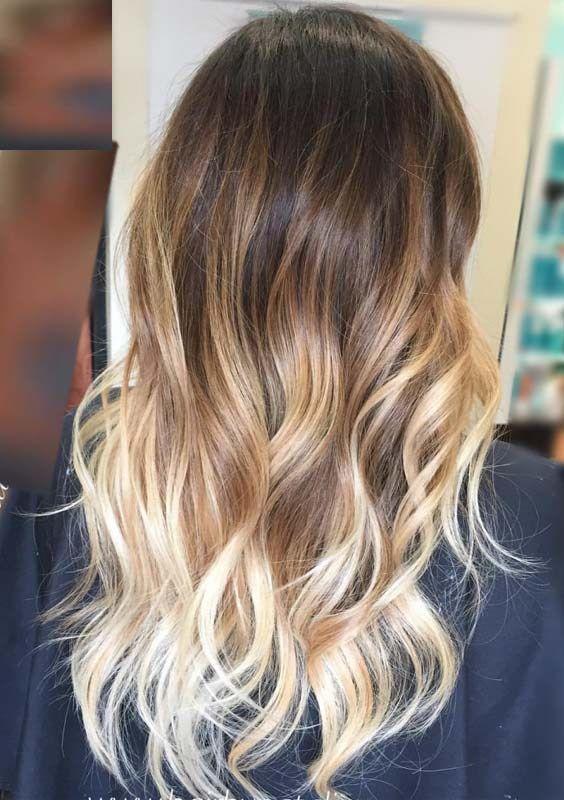
Ombre Vs. Sombre: Which Gradient Look Is Right For You?(Opens in a new browser tab)
Natural Beauty: Tips For Transitioning To Your Authentic Hair Texture(Opens in a new browser tab)
Mastering The Art Of The Smokey Eye(Opens in a new browser tab)

